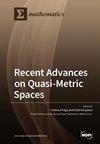An Efficient and Automatic Simplification Method for Arbitrary Complex Networks in Mine Ventilation
IF 2.2
3区 数学
Q1 MATHEMATICS
引用次数: 0
Abstract
The simplification of complex networks is a research field closely related to graph theory in discrete mathematics. The existing methods are typically limited to simplifying the series sub-networks, parallel sub-networks, diagonal sub-networks, and nested simple sub-networks. From the current perspective, there are no available methods that can handle complex sub-networks and nested complex sub-networks. In this paper, we innovatively propose an efficient and automatic equivalence simplification method for arbitrary complex ventilation networks. The method enables, for the first time, the maximum possible equivalence simplification of nested simple sub-networks and nested complex sub-networks. In order to avoid the NP-hard problem caused by the searching of simplifiable sub-networks, it is necessary to analyze the intrinsic topology relationship between simplifiable sub-networks and spanning sub-graphs to optimize the searching process. One of our main contributions is that we present an efficient searching method for arbitrarily nested reducible sub-networks based on the bidirectional traversal process of a directed tree. The method optimizes the searching process for simplifiable node pairs by combining the characteristics of a directed tree with the judgment rules of simplifiable sub-networks. Moreover, by deriving the formula of an equivalent air resistance calculation for complex sub-networks, another one of our main contributions is that we present an equivalent calculation and simplification method for arbitrarily complex sub-networks based on the principle of energy conservation. The basic idea of the method is to calculate the equivalent air resistance using the ventilation network resolution of the constructed virtual sub-networks. We realize the simplification method of arbitrarily complex mine ventilation networks, and we validate the reliability of the simplification method by comparing the air distribution results using the network solution method before and after simplification. It can be determined that, with appropriate modifications to meet specific requirements, the proposed method can also be applicable to equivalent simplification instances of other types of complex networks. Based on the results analysis of several real-world mine ventilation network examples, the effectiveness of the proposed method is further verified, which can satisfactorily meet the requirements for simplifying complex networks.矿井通风中任意复杂网络的高效自动简化方法
复杂网络的简化是一个与离散数学中的图论密切相关的研究领域。现有方法通常仅限于简化串联子网络、并联子网络、对角线子网络和嵌套简单子网络。从目前来看,还没有可用的方法可以处理复杂子网和嵌套复杂子网。在本文中,我们创新性地提出了一种适用于任意复杂通风网络的高效自动等价简化方法。该方法首次实现了嵌套简单子网络和嵌套复杂子网络的最大等价简化。为了避免因搜索可简化子网而导致的 NP-困难问题,有必要分析可简化子网和跨度子网之间的内在拓扑关系,以优化搜索过程。我们的主要贡献之一是提出了一种基于有向树双向遍历过程的任意嵌套可简化子网的高效搜索方法。该方法结合有向树的特点和可简化子网的判断规则,优化了可简化节点对的搜索过程。此外,通过推导复杂子网的等效空气阻力计算公式,我们的另一个主要贡献是提出了一种基于能量守恒原理的任意复杂子网的等效计算和简化方法。该方法的基本思想是利用所构建的虚拟子网络的通风网络分辨率来计算等效空气阻力。我们实现了任意复杂矿井通风网络的简化方法,并通过比较简化前后网络求解法的配风结果,验证了简化方法的可靠性。可以确定,只要根据具体要求进行适当修改,所提出的方法也可适用于其他类型复杂网络的等效简化实例。通过对多个实际矿井通风网络实例的结果分析,进一步验证了所提方法的有效性,能够满足简化复杂网络的要求。
本文章由计算机程序翻译,如有差异,请以英文原文为准。
求助全文
约1分钟内获得全文
求助全文
来源期刊

Mathematics
Mathematics-General Mathematics
CiteScore
4.00
自引率
16.70%
发文量
4032
审稿时长
21.9 days
期刊介绍:
Mathematics (ISSN 2227-7390) is an international, open access journal which provides an advanced forum for studies related to mathematical sciences. It devotes exclusively to the publication of high-quality reviews, regular research papers and short communications in all areas of pure and applied mathematics. Mathematics also publishes timely and thorough survey articles on current trends, new theoretical techniques, novel ideas and new mathematical tools in different branches of mathematics.
 求助内容:
求助内容: 应助结果提醒方式:
应助结果提醒方式:


